It's Not Easy Being Green Revisited
For the last five weeks, I've been revisiting a series of articles on color philosophy that I wrote thirteen years ago. I started with white ("The Great White Way Revisited"), then blue ("True Blue Revisited"), then black ("In the Black Revisited"), then red ("Seeing Red Revisited"), and finally today I"m getting to green.
For each of these five columns, I am answering the same six questions I posed in the original columns—but with a few updated thoughts from over the years. Green, in particular, presents the biggest change from the original article. Here are the six questions:
• What does the color desire? What is its end goal?
• What means does the color use to achieve these ends?
• What does the color care about? What does the color represent?
• What does the color despise? What negatively drives the color?
• Why does the color like its allies and hate its enemies?
• What is the color's greatest strength and biggest weakness?
For the fifth and final time (well, at least until I revisit these articles again in thirteen years or so), let's get to it.
What does the color desire? What is its end goal?
Green wants acceptance.
The other colors are all focused on how they'd change the world to make it better. Green is the one color that doesn't want to change the world, because green is convinced that the world already got everything right. The natural order is a thing of beauty and has all the answers to life's problems. The key is learning to sit back and recognize what is right in front of you.
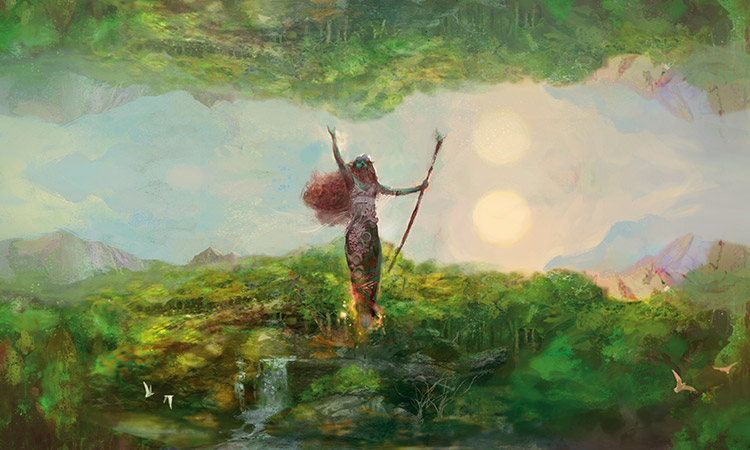
Each individual is born with all the potential they need. The secret to a happy life is to recognize the role you were born into and then embrace it. Do what you were destined to do. The world is this elaborate system, and each one of us gets to play a part. And it's not something we have to guess about; it's imprinted on us, it's in our genes. Just look within.
In addition, you have to learn how you fit into the larger picture. Nature has a beautiful structure. Part of life is recognizing what role you play and how that role interconnects with the web of life. You're not alone. You're part of a complex system full of interdependencies.
The problem is there's so much going on that it's easy to lose track of what's already there. Too many individuals get so caught up in the details of their lives that they don't bother to sit back and understand the bigger picture. Green truly believes that the rest of the colors simply aren't taking the time to appreciate what is already there.
What means does the color use to achieve these ends?
If individuals won't take the time to come to nature, well then green will have to bring nature to them. Green believes that once you understand what life has to offer, you will accept its gifts. The key is to find ways to help others see what green already sees.
Green's greatest tool in its quest to help others appreciate what it already sees is nature itself, and this plays out in a number of different ways.
Green has a special bond with creatures, especially the ones living in the wild that are tapped into the ecosystem. This means that green is more of a creature color than the others (although white tends to have lots and lots of small creatures that band together for strength). It means green has access to larger and more vicious creatures. Green puts this arsenal of wild animals to good use.
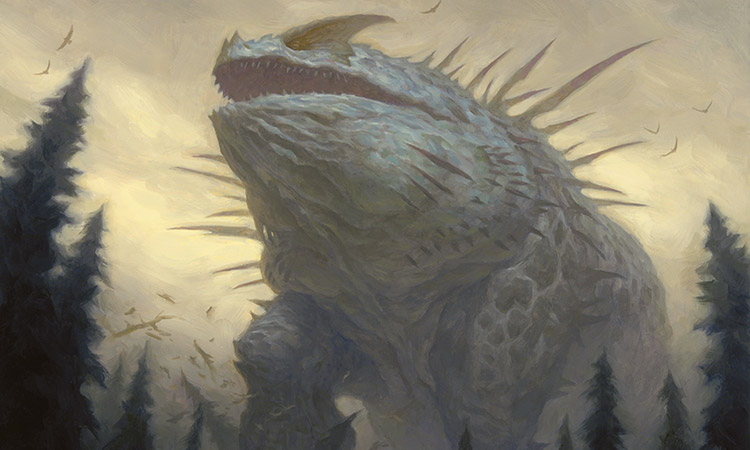
Craterhoof Behemoth | Art by Chris Rahn
Green is also closely tied to the land. This helps green in numerous ways. It allows green to find new connections faster and to accumulate mana at a swifter speed than the other colors. This allows green to both cast larger spells faster and to gain access to other colors of mana more easily.
Green is also very connected to life itself and has the ability to rejuvenate. Tied closely to this is green's connection with growth, which it can use to overwhelm others. Green's close bond with the natural order means that it can speed up natural processes that might normally take much more time.
All of this, though, is green using the elements of nature as a means to show off what nature can do. Because once again, green truly feels that the one thing keeping individuals from accepting the truth of the world is a lack of understanding. There's an inner harmony that's necessary in order to be able to take in what's all around you, and green works hard to allow individuals to tap into that harmony.
What does the color care about? What does the color represent?
Here are a bunch of core things important to green:
Life (birth)—One of the most potent forces of nature is the creation of new life. Green recognizes this as a key strength, and does everything it can to foster and honor the ability.
Growth—Green is not about doing nothing. Nature itself is very active. As others twiddle their thumbs, the world is slowly but constantly growing. This unstoppable force of change is another very powerful element of nature, and it's something green taps into whenever possible.
Nature (and natural things)—Green makes a big distinction between things that are naturally made and things that are artificially made. The first is a great gift from the world, and the second is an abomination. The world is creating amazing things. Green admires them and is always on the lookout for ways to make use of them to aid in green's quest.
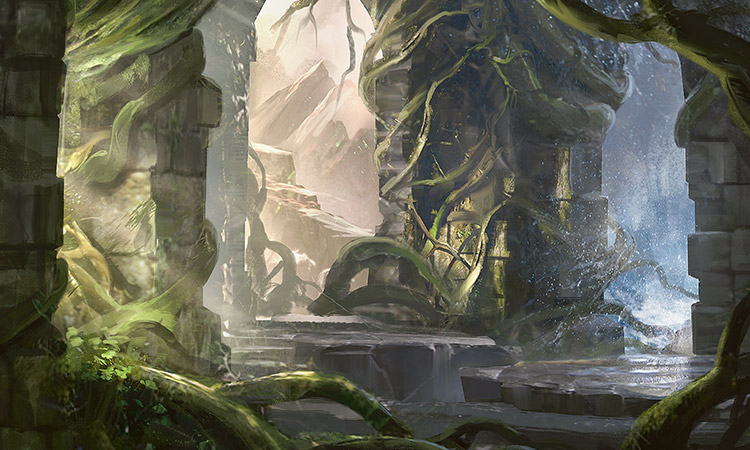
Boundless Realms | Art by Cliff Childs
Reality (in contrast to illusion)—Truth is another potent force in the world. Green promotes truth because it reveals what actually is. Other colors try to misrepresent life, using lies and propaganda to mislead individuals to keep them from seeing the truth. As such, green is adamant about shutting down anything that misrepresents reality.
Community—We are not isolated individuals but an interconnected web. Part of embracing green's philosophy is understanding the importance of how each of us figures into the lives of the others. Grasping the role this larger group plays is a vital piece in understanding how the world works.
Interdependence—Nothing exists in a vacuum. Each individual's actions have consequences to the individuals around them. Part of accepting the message that green is trying to share with the world is realizing that you co-exist with so many others.
Spiritualism—Green leaves religion to white, but it very much believes in the importance of accepting higher forces at play. Things don't just happen, they happen for a reason. The interconnectivity of nature doesn't just occur on a physical level, it happens on a much higher plane of understanding as well.
The Past—Of all the colors, green is the most backwards-looking, as it believes that your future is very much determined by your past.
Wisdom—Blue looks to the future and seeks knowledge, green looks to the past and seeks wisdom. Green believes that the secret to success today is understanding the successes and failures of those who came before you.
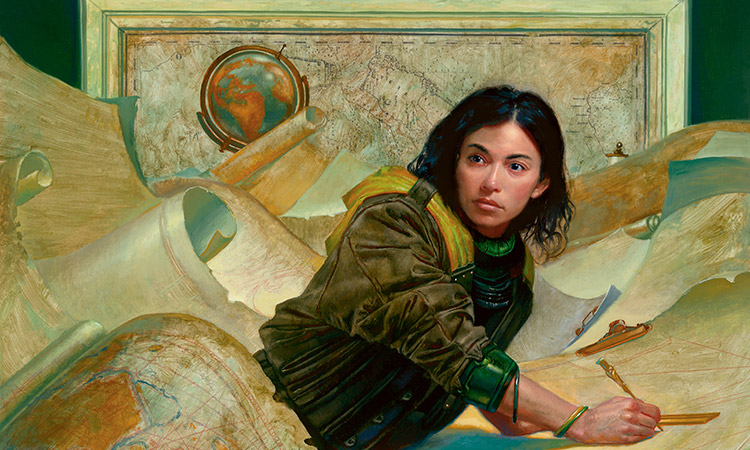
Cartographer | Art by Donato Giancola
Ancestry—If who you are is in your genes, then who you come from is of utmost importance.
Tradition—Green believes that we need to be constantly touching the past, and a great way to do that is through traditions where you get to continue activities passed down through time by your ancestors.
Instinct—Nature provides motivation through biology. Most creatures, for example, don't think about what they're going to do. They just do what comes naturally to them. To embrace green's philosophy is to understand that that those feelings are found not just in animals but in every living creature.
Animals—The less civilized you are, the more you instinctively understand the role of nature. Animals, especially wild ones, connect with nature in a way that is hard for more sapient creatures to understand.
Plants—Green's connection with living things doesn't stop with animals. Green is just as concerned about the flora as it is about the fauna.
What does the color despise? What negatively drives the color?
Green accepts that change is a part of the natural process. What green can't stand is unnatural change, where an outside force alters something that was not meant to be changed. This comes out in two different ways. The first is when someone creates something that was never supposed to exist. This dislike of man-made things is a big reason that green hates artifacts (and to a lesser extent, enchantments). There is no greater slap to the face than someone trying to usurp the natural process of creation.
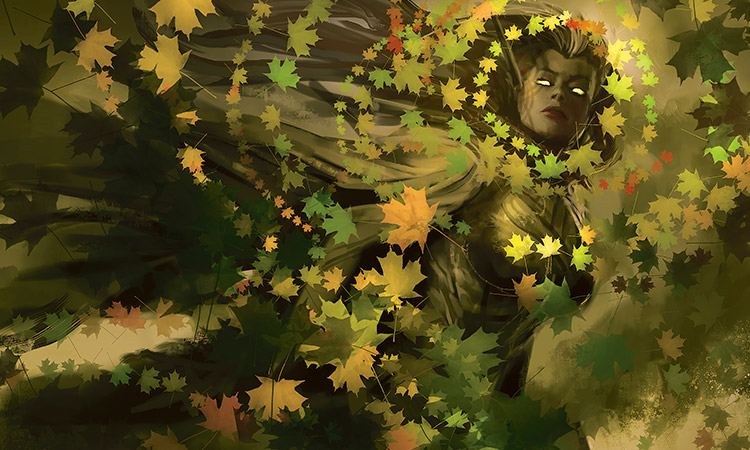
Autumn's Veil | Art by Kekai Kotaki
Second, green can't stand things being removed from nature inorganically. The ecosystem is so carefully balanced that the unnatural removal of a component can throw everything off. Kill a bunch of predators and, all of the sudden, the prey start growing in number. This can have devastating consequences if left unchecked.
Basically, green feels a strong connection with the status quo, so any attempt to change it through artificial means makes green very angry.
Why does the color like its allies and hate its enemies?
Green looks at white and sees a fellow color that understands the importance of community—making these two colors the ones most reliant on creatures. White also has a very peaceful side that green can connect with. Green's biggest problem with white is that it doesn't understand the wild side of green that gives in to its base urges.
In contrast, green sees red as a color that does embrace its wild side. Green is a little more instinctual while red is more impulsive, but both colors understand the internal draw to do things you feel compelled you must. Red is also a color, like green, with access to lots of mana and a larger stable of giant creatures. Finally, green can connect with red's destructive side, as green recognizes that quality of nature. Green's biggest issue with red is that red is too focused on what it wants and never thinks about the consequences of its actions to those around it.
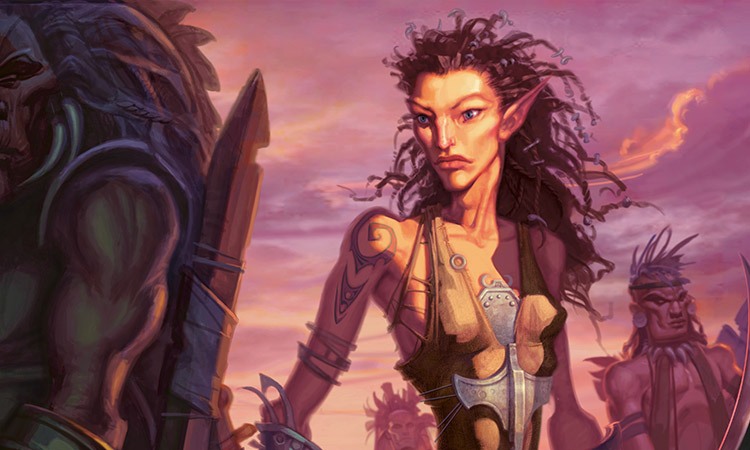
Bloodbraid Elf | Art by Dominick Domingo
If green leans towards nature, blue leans towards nurture. Blue has this false notion that individuals have complete say on who they are. Blue not only fails to acknowledge what comes from within, it also spends lots of time and energy trying to become something else. Blue is the color most intent on creating artificial items, with complete disregard for anything natural. Blue and green both seek to educate, but while green looks to the wisdom of the past, blue is obsessed with the unknown of the future. Blue not only prevents green from getting out its message, it constantly misleads individuals by offering them a false path.
Green looks at black and sees a color intent on destroying everything green holds dear. Black is power-hungry and has no conscience to keep it in check. Black kills wantonly and dangerously, wrecking ecosystems left and right. Green sees death for what it is: a key component in the great circle of life. Black sees it as a weapon, and through misuse of it threatens the very system green cares most about. How can green introduce everyone to the natural world around them if black destroys it? Also, black does not understand that one's role in life is predetermined—it acts out trying to prove that it has free will.
What is the color's greatest strength and biggest weakness?
Green's greatest strength is its absolute, unwavering belief in the natural system. Green embraces nature and is able to connect with it through that bond and use it in ways that are primal and very powerful. This connection also allows green access to many giant creatures that serve as muscle to help green push forward its agenda.
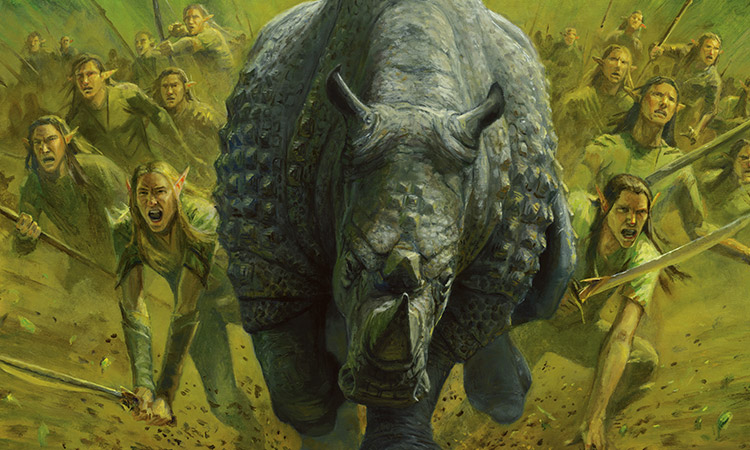
Overwhelming Stampede | Art by Steven Belledin
Green's weakness is its over-reliance on this system. For example, green is so focused on using creatures that there are a number of problems green simply can't deal with when it doesn't have creatures. In short, green puts too many eggs in one basket—and when that basket doesn't have the answer, green is often at loss for solving its problems.
Examples of Green Characters in Recent Pop Culture
Minions (Minions)
No one knows where they come from, but the little yellow creatures seem born to serve. They understand their role and work very hard to fulfill it the best they can.
Groot (Guardians of the Galaxy)
Besides literally being a tree, Groot is definitely the Guardian who sits back most and enjoys things as they are. He's also the one most attuned into the interconnectivity of living things.
Owen Grady (Jurassic World)
While most of the others at Jurassic World see the dinosaurs as attractions, Owen is the one who understand them for what they are: living creatures that need to be treated accordingly. He bonds with the raptors, for example, because he's able to establish himself as the alpha figure.
Hodor (Game of Thrones)
Hodor is a simple but strong man. He thinks very little, but instead functions off his instincts.
Poison Ivy (Batman comics)
Ivy is the perfect example of a green villain. Her priority is preserving nature and the natural order, and she will often make use of plants and natural poisons as she does whatever she can in her power to prevent any change to the status quo.
Daryl (Walking Dead)
Of all the survivors of the zombie apocalypse, Darryl seems to be the most understanding of it. It's not that he likes it, he just accepts it for what it is: the new way of life. Daryl recognizes the role he has to play, and has learned to appreciate it.
And finally, our fifth and final Simpson:
Maggie (The Simpsons)
Besides being a baby, and thus the most instinctual of the family, Maggie is the one who most likes the family as it is and works hard to keep it from changing.
A Green Thumb
And that is the philosophy of green. As I am every week, I am eager to hear your thoughts on what I talked about today. You can contact me through my email or any of my social media accounts (Twitter, Tumblr, Google+, Instagram).
Join me next week when I finally get to some card-by-card design stories for Magic Origins.
Until then, may you take time to sit back and enjoy the world around you.
"Drive to Work #250—2011"
This is another podcast in my series "20 Years in 20 Podcasts." Today I talk all about the year 2011.
"Drive to Work #251—Block Inspirations, Part 1"
This is part one of a two-part series talking about the inspirations for each of Magic's twenty blocks.
- Episode 251 Block Inspirations, Part 1 (14.6 MB)
- Episode 250 2011 (16.2 MB)
- Episode 249 Evergreen Keywords (21.0 MB)
- Episode 248 10 Things Every Game Needs – Strategy (20.1 MB)
- Episode 247 Judging (16.3 MB)

